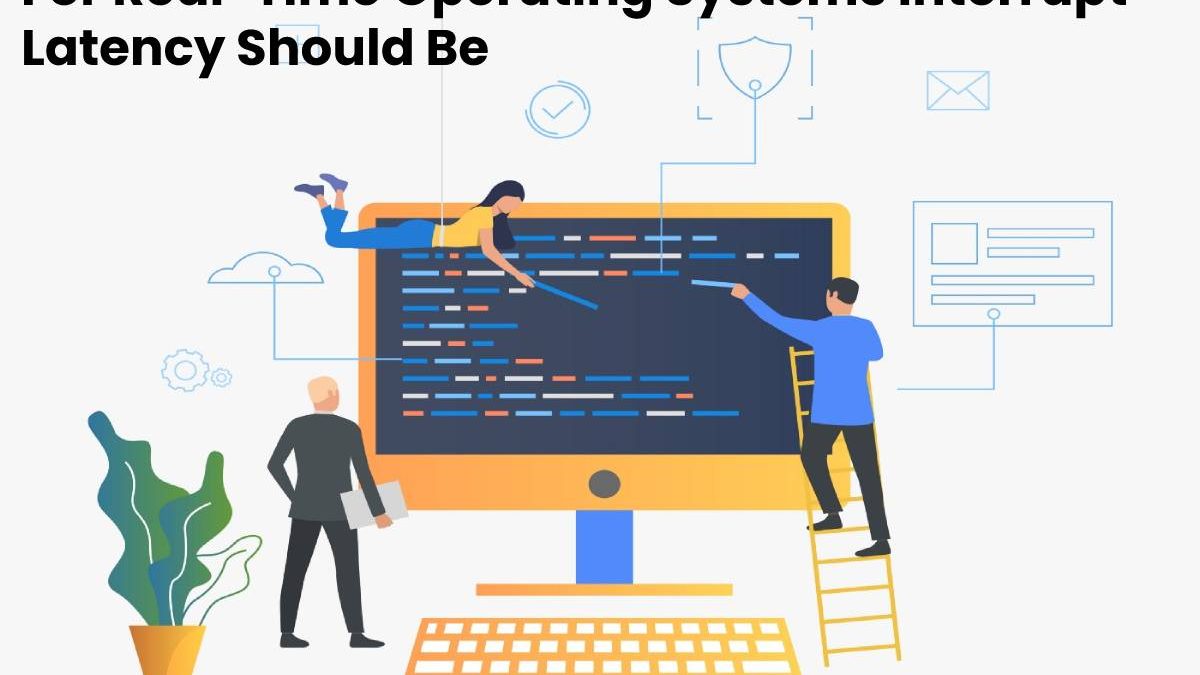Table of Contents
For real-time operating systems Interrupt Latency should be has developed for applications in interrupt real-time.
For Real- time operating system Interrupt Latency should be block or ready because, typically, one study can run per CPU. As such, correction of your answers is require under certain time restrictions. To guarantee the correct behavior in the necessary time, the system needs to be predictable operating system from English or prating system is the set of programs of a computer system that manages the resources of hardware and provides services to application programs of software. These programs are execute in a privileged mode with respect to the rest. If you do not respect them, it will be said that the system has failed.
One of the purposes And operating systems that the broker seed manages is to manage hardware access protection and location resources, which relieves application programmers from dealing with these details. Most electronic devices that use microprocessors to function have an operating system incorporated mobile phones, DVD players, computers, routers, etc. In which case, they are handled through a graphical user interface, a window manager, or a desktop environment if it is a cell phone, through a console or remote control, if it is a DVD, and through a command line or web browser, if it a router.
For Real-Time Operating Systems Interrupt Latency Should Be Characteristics

The For Real-Time Operating systems Interrupt Latency Should Be Characteristics of An RTOS is the level of consistency concerning the amount of time it takes to accept and complete application tasks. The Variability is jitter hard real-time operating system hard RTOS has less jitter than a real soft time. Operating system interrupt latency should be Hard RTOS While a late response is acceptable on a soft RTOS the main objective of the design is Nat High Performance. Still, the guarantee of a category of soft or hard Performance. A RTOS Usually or generally can meet a deadline is a flexible real-time operating system. But if you can meet a deadline so deterministic real-time operating system.
For Real-Time Operating Systems Interrupt Latency should be Programming

The Typical designs Three states.
Running on the CPU
Done ready to performed
Blocked to come for an event I/O for example.
The number of items in the list queue can vary greatly, depending on the number of tasks the system. Needs to perform and the system’s type of scheduler. In simpler, non-preemptive, but still multitasking systems, a study has to give up its CPU time to other tasks. Which can cause the ready queue to have a more significant number of general functions in the ready-to-run state of resources.
For Real-time Operating systems Interrupt Latency should be Usually, the list data structure in the scheduler is design to minimize. The worst-case period of time in the critical Section of the system’s scheduler. In simple all interrupts disabled. But the data structure option also depends on the maximum number of tasks that can in the list list.
There was usually trade between the interrupt latency throughput and the processor Utilization. Many of the CPU and OS design technology will decrease throughput and increase processor Utilization. Technology that increases throughput may increase interrupt latency and increase processor. Lastly, reducing processor trillion may increase interrupt latency and lower throughput.
Also Read: Something You Pay For College Say

